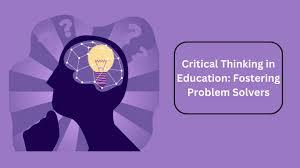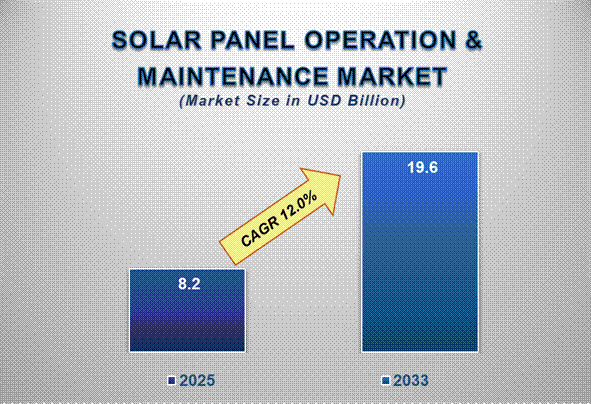The Role of Critical Thinking in Modern Education Systems

Why I Believe Critical Thinking Matters More Than Ever
Problem:
When I look at how education has evolved over the years, I see one major challenge—students are often taught what to think, not how to think. Many systems still emphasize memorization and repetition over reasoning and problem-solving. That’s fine for short-term test success, but in real life, we need more than that. Whether someone is choosing a career path, evaluating information online, or even selecting a product, critical thinking helps them make sound decisions based on logic and evidence.
Agitation:
The world today moves fast. Information spreads instantly, and opinions often outnumber facts. Without strong critical thinking skills, it’s hard to separate credible knowledge from noise. I’ve found that when people lack analytical thinking habits, they struggle not only academically but also in everyday life—understanding news, social media, and public policy debates. The ability to question, evaluate, and reason has never been more essential.
That’s why I think it’s time to look at how schools and universities can make critical thinking a core focus. It’s not just about improving grades; it’s about building adaptable, confident learners ready for the real world. And honestly, it’s a skill that benefits everyone—from teachers and professionals to those exploring lifestyle interests like vaping or tech innovation.
Solution:
Let’s unpack how modern education systems are embracing critical thinking and what that really means for learners today.
1. What Critical Thinking Really Means
When I talk about critical thinking, I don’t mean being skeptical or argumentative. It’s more about using reason to analyze information, question assumptions, and make well-informed choices. Critical thinking helps students understand context, connect concepts, and identify patterns that others might miss.
Key aspects include:
-
Questioning: Encouraging students to ask “why” and “how,” not just accept information as truth.
-
Evaluation: Comparing multiple perspectives and deciding which holds more weight.
-
Problem-solving: Applying logic to new situations instead of memorizing old answers.
-
Reflection: Learning from past experiences to improve future decisions.
When students engage with material this way, they build intellectual independence. They stop relying on authority for answers and start trusting their reasoning. That independence extends beyond the classroom—it shapes how they make everyday decisions.
Just as I take time to choose a vaping flavor like Blackberry Custard Monster Salt E-Liquid based on personal preference, knowledge, and understanding of what suits me best, learners should be empowered to apply that same process to ideas and information.
2. How Schools Are Integrating Critical Thinking
I’ve noticed more schools now focus on project-based learning, collaborative tasks, and discussion-driven lessons. This shift allows students to explore subjects through experience rather than rote memorization.
Some effective strategies include:
-
Inquiry-based learning: Students investigate questions instead of being given immediate answers.
-
Cross-disciplinary teaching: Linking science with philosophy or math with real-world economics.
-
Active discussion: Encouraging debate where students learn to support their views with evidence.
-
Real-life application: Using simulations, case studies, or practical examples to connect learning with life.
In these setups, teachers act as facilitators, guiding students toward discovery rather than dictating every fact. It’s a simple but powerful shift. When I think back on how this kind of learning helped me, it’s clear that engagement skyrockets when I feel ownership over what I’m learning.
3. Why It Matters for the Future Workforce
Critical thinking isn’t only valuable in academics—it’s a top skill employers look for today. As industries evolve, workers who can analyze situations, adapt quickly, and make thoughtful decisions are in high demand. Automation and AI can handle routine tasks, but creativity and reasoning remain uniquely human strengths.
Here’s how critical thinking helps:
-
Better problem-solving: Employees who think critically can find solutions faster and with fewer mistakes.
-
Improved communication: It builds the ability to explain ideas clearly and listen effectively.
-
Stronger leadership: Decision-making grounded in logic leads to trust and respect in teams.
-
Adaptability: When people understand the “why” behind their work, they handle change more confidently.
In a way, developing critical thinking is like refining taste or preference—it takes reflection, awareness, and practice. Just like experimenting with something unique such as Creamsicle custard Monster Swirl Edition, understanding what works for you requires curiosity, analysis, and open-mindedness. Education systems that foster those qualities are setting students up for lasting success.
4. Building Critical Thinking Beyond the Classroom
What’s exciting to me is that critical thinking doesn’t stop when school ends. It’s a lifelong practice that grows through reading, conversation, and everyday reflection. In my view, there are a few simple ways anyone can strengthen this skill:
-
Engage with different viewpoints: Read articles or listen to podcasts that challenge your beliefs.
-
Ask more questions: Don’t settle for surface-level understanding—dig deeper.
-
Analyze decisions: Reflect on what influenced your choices, whether it’s career moves or lifestyle habits.
-
Stay informed: Follow developments in education, science, and technology to stay grounded in facts.
As someone who values independent thought, I see parallels between making smart learning choices and making informed consumer choices. Both rely on curiosity and reasoning. Whether evaluating course material or selecting a product, the same logic applies—identify goals, assess evidence, and make confident decisions.
Connecting Critical Thinking with Everyday Life
Critical thinking reaches far beyond textbooks. It shapes how we interact with others, consume information, and understand the world. For example, in today’s digital culture, being able to verify facts and think independently protects us from misinformation. It helps students and adults alike become thoughtful citizens who contribute to society instead of just reacting to it.
Education systems that embed critical thinking aren’t only teaching facts—they’re cultivating awareness, empathy, and informed judgment. That’s what makes learning relevant and enduring.
When I think of how thoughtfully developed skills can enhance any aspect of life, I can’t help but draw a comparison with how I explore new vaping experiences or flavors. Just as I take time to choose the perfect classic custard vape, students and lifelong learners should take time to evaluate knowledge and develop their reasoning. Both are about understanding what truly aligns with one’s goals and values.
Final Thoughts
Modern education systems are slowly but surely recognizing that critical thinking is the foundation for success in a complex world. It equips learners with the tools they need to adapt, analyze, and act responsibly in the face of change. From the classroom to the workplace, and even in personal choices, critical thinking gives us the confidence to make decisions that stand on reason rather than impulse.
I believe when schools, educators, and communities prioritize this skill, they’re not just preparing students for exams—they’re preparing them for life. And that’s the real goal of education: nurturing thoughtful, capable individuals who can question, create, and contribute meaningfully to the world around them.



